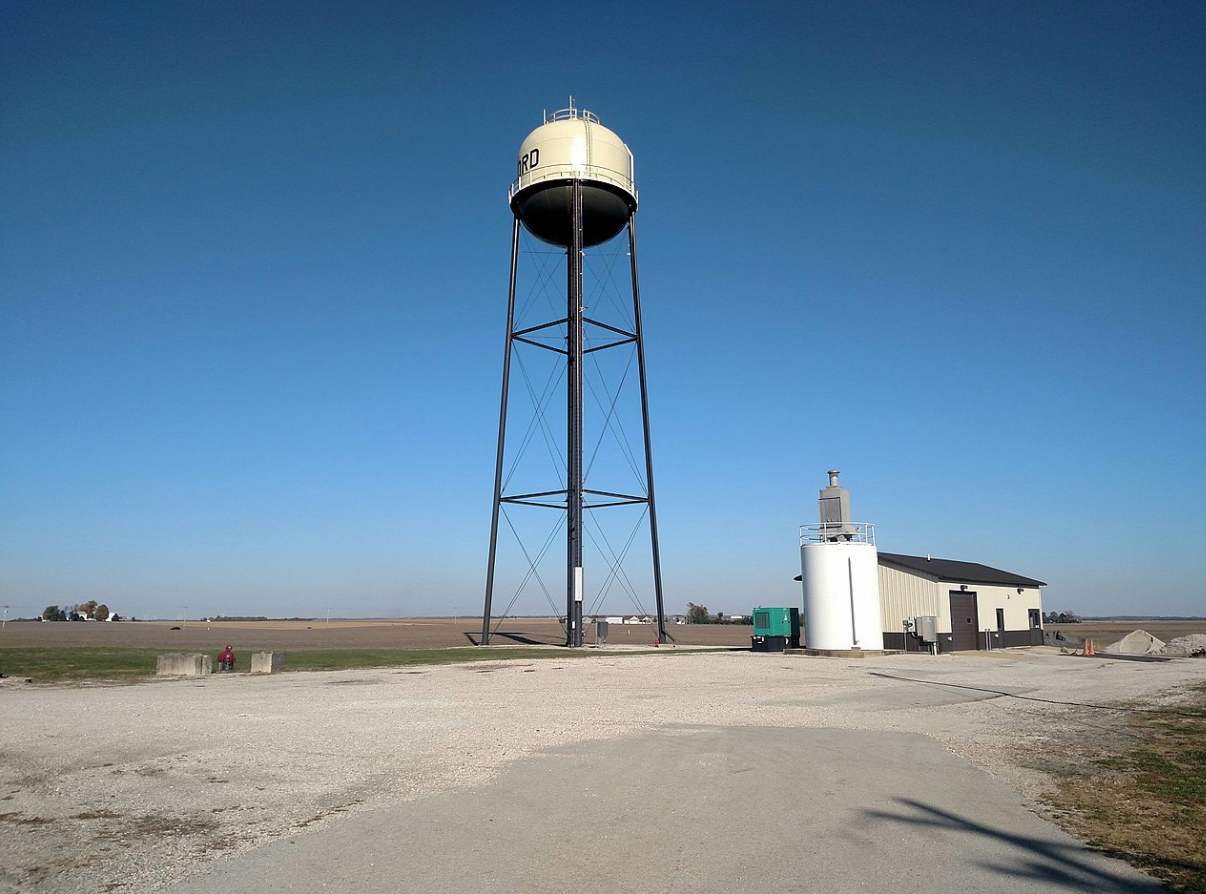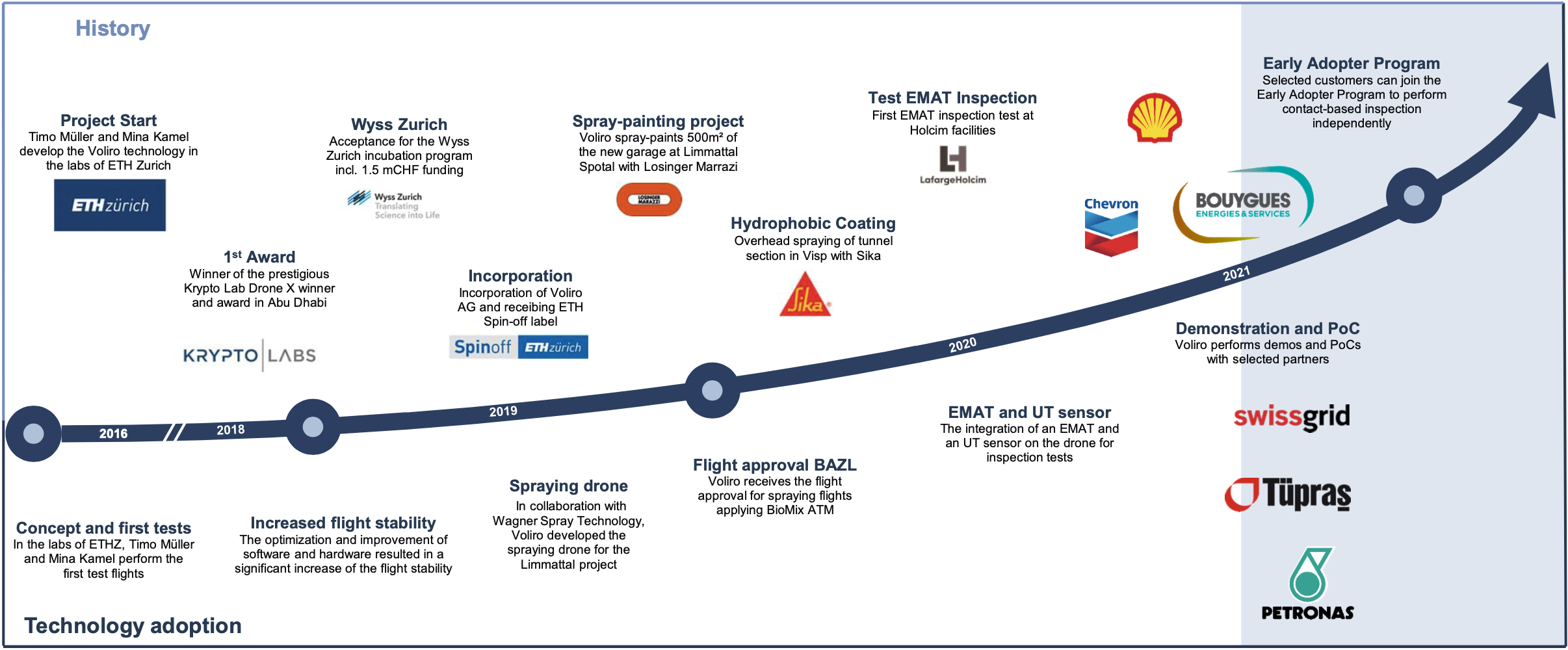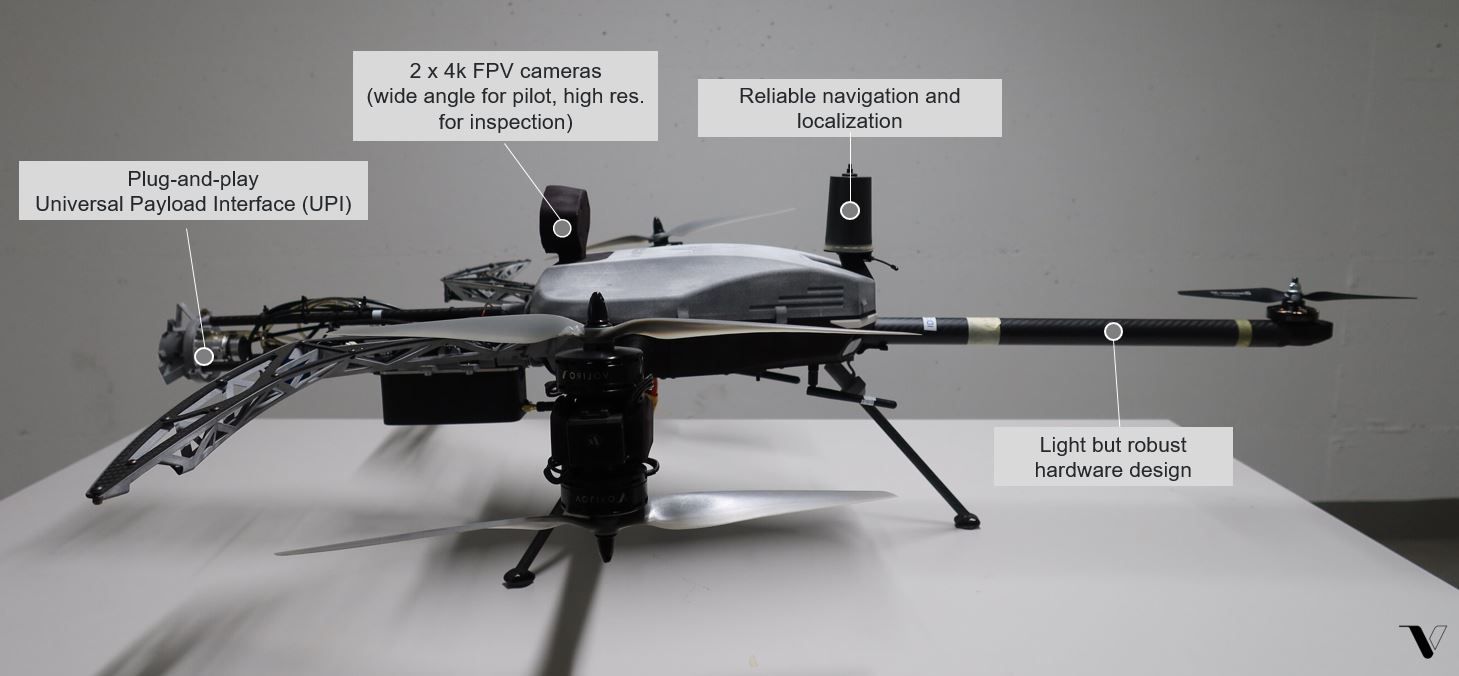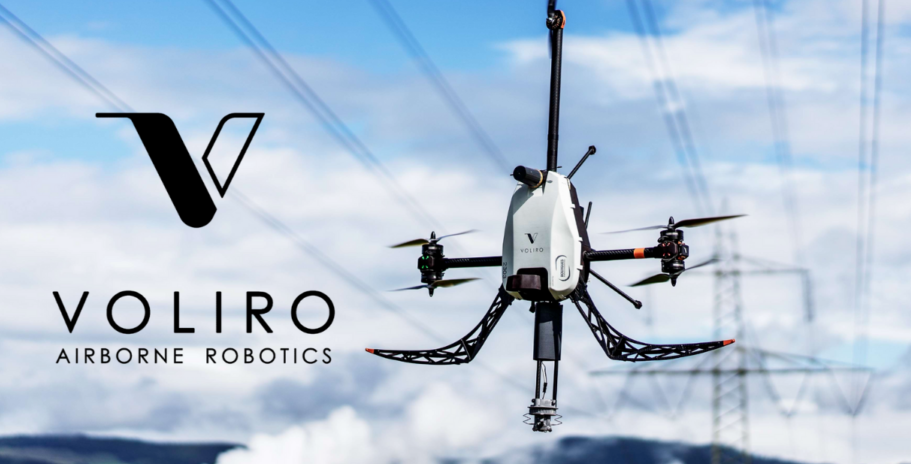Imagine, for a second, you’re an engineer responsible for the integrity of an aging water tower. The steel structure is elevated about 10 metres off the ground and is spherical in shape.
From your vantage point on the ground, it appears to be okay. There’s no visible rust, but you’re concerned there could be corrosion beneath the paint.
What are your options? Well, you could send someone up to inspect it visually. Or, better yet, have them take a specialized tool that can precisely measure the thickness of that metal or even the paint or coating on the surface – simply by touching it.
This is known as Non-Destructive Testing, or NDT. In the photo you’re about to see, there’s a ladder leading to a lower-level catwalk. This provides some access for an inspector – but only allows them to examine a fraction of the entire structure.
In order to make a complete inspection you’ll need to look at other options. Will you build scaffolding beneath and surrounding the structure so the worker has a safe platform from which to carry out the measurements? Will you rig them with a safety harness and ropes and lower them from the top of the tank? Might you have them attach the sensor to a super-long stick?
None of these choices are optimal, and the first two involve varying degrees of risk (falls from height are one of the leading causes of death or disability in the workplace). You’ll also have to ensure you’re fully compliant with a host of worker safety regulations – all of which exist for very good reasons. Plus, scaffolding is an expensive proposition and will require about a week for a contractor to put up and then disassemble. And sticks or poles? Well, the longer the reach the more cumbersome and awkward the task.
Take a really good look at the image below. How would you solve the problem? How would you deploy resources in order to get measurements from anywhere on the water tower’s surface? And what about that black semi-sphere at the bottom? Tricky.
Of course, you’d face the same issue if you wanted to spray-paint or apply some other coating to the surface. In fact, it’s the latter issue that the engineers who developed this product initially set out to solve.
(Photo by TheTechnician27, via Wikimedia Commons)

A Swiss solution
Back in 2016, engineering students Timo Müller and Mina Kamel set out to design a drone that could do that kind of work – spraying paint or coatings. They were at Switzerland’s Zürich ETH, a research university that has been a catalyst for a number of successful technology startups.
Working in the ETH Lab, they started from scratch on the project. But as it evolved, they realized there was an even greater need for a drone that could carry out Non-Destructive Testing, which requires that the sensor attached to the flying robot physically touch the surface of the asset being inspected. That asset might be the hull of a ship, the interior of a tall steel tank – even the massive pylons that support high-power transmission lines.
They knew that a standard quadcopter would not be up to the task. Turbulence was one issue. But they also wanted to design a product that could point its sensor anywhere in space – and then make precise contact with pressure.
Picture a drone inside a sphere, with a sensor pointing forward. The Voliro T is capable of directing that sensor anywhere within that sphere, then holding it against the surface with a force of up to three kilograms.
You’ll get a better idea of what we mean in this video. What this drone can do would be impossible for a standard quadcopter. (And yes, it can still paint!)
Multiple advantages…
At first glance, you might think of this as a tricopter. But it’s really very different. First of all, the motors are in a T-5 configuration – with twin rotors on each forward arm and a single rotor for stability in the rear. Traditional tricopters use a Y configuration, with a servo tilting that rear motor for yaw authority. This rear motor is fixed, but the forward motors can be tilted and rotated forward or aft for precise thrust vectoring.
This unusual design means the Voliro T can be stable when pointed in literally any direction in space. Think back to that water tank. This drone could take measurements from the bottom-up, the top-down, and everywhere in between. The design intrigued us enough that we got in touch with Voliro.
“We exist because we want to remove working at height,” explains Chris Udell, Voliro’s Business Development Lead, adding that the Voliro T “is one of the first drones to be designed from the very start to push against a surface.”
That’s not something you can do with a quadcopter, at least not reliably.
“We’ve seen a lot of cowboys where they’ve strapped an NDT sensor to a multirotor,” he says. “Standard multirotors are amazing tools…but what they cannot do is touch a surface reliably and hold position.” That’s because turbulence close to structures can really mess with a stable position hold.
“So multirotors are really the wrong tool for the job. The other advantage is that you can push between two and three kilograms of force on the surface.” That pressure is needed for some of the sensors to get accurate readings – and another reason why long poles are a challenging option. The greater the height, the more difficult it is to apply pressure from below.
Universal payload interface
One of Voliro’s value propositions is the ability to quickly swap sensors, depending on the task.
The Voliro T interfaces with three different NDT sensors, each of which is designed to capture specific kinds of data.
They are:
Ultrasonic Flaw Detector
Measures the thickness of materials, including metals, composites and plastics
Electro-Magnetic Acoustic Transducer (EMAT) Thickness Gauge
This one measures the thickness of conductive materials, such as iron or mild steel
ElektroPhysik MiniTest
Measures the thickness of dry films, such as paint or coatings or wraps – even metallic plating (chrome, zinc, nickel)

Years in development
We know, from experience, that developing new products is challenging, exhilarating, and time-consuming. Though Voliro is now in the hands of some major early adopter clients, it wasn’t an overnight slam-dunk. The Voliro team, starting with Mina Kamel and Timo Müller – who’s also a former professional Skicross athlete (think motocross on skis) – have been at this now for six years.
That’s some tough slogging. But throughout the evolution of this product, there were regular technological milestones – as well as recognition and funding – that continuously validated the vision. Voliro provided a timeline of the company’s history; it’s impressive.

Saves time, money
Of course, none of this effort would have been worthwhile if the final product didn’t offer a clear value proposition. Voliro says its field work has proven, repeatedly, that this system is faster and more cost-effective than traditional methods. In one of its case studies, using the Voliro T saved the installation and tear-down of some 615 cubic meters of scaffolding – which would have required 400 person-hours of labour. Working on a single asset, a pilot and inspector working in tandem can capture about 200 measurements per hour.
In another example, Voliro carried out ultrasonic flaw detection inside a total of five steel tanks – measuring the walls and roofs of the assets. Scaffolding would have been impossible inside this tank, and rope access (dangling an inspector with a handheld sensor) wasn’t feasible. And the old stick method? That’s limited to a height of 12 metres, meaning in this case only limited coverage would have been possible.
The Voliro T completed inspection of all five tanks in just 1.5 days, taking a total of 700 measurement points. Each of those points was geo-referenced and also captured in 4K video. In fact, the Voliro T has two 4K cameras onboard, plus a lot more, as detailed in this company handout:

Robot as a service model
As we’re starting to see with a number of specialized drone companies, Voliro is going with a subscription model. Rather than purchase a Voliro T, you lease one. And that, says Udell, comes with a number of benefits.
“It really helps users get their return on the investment quicker. It splits down the initial outlay, so it’s a subscription charge every year.”
And what does a client get for their money?
“We give training, and also offer upgrades. The drone industry is moving very fast…so this idea of using a robot as a service and upgrading the platform as it goes along” means the customer never gets stuck with outdated equipment, nor faces the outlay of an outright purchase.
Companies like Shell and Chevron are part of Voliro’s early adopter program. And, says Udell, “There’s worldwide interest in the device.”
InDro’s take
As a research and development company, we have a lot of experience identifying technology gaps and building solutions that previously didn’t exist. We appreciate new approaches, as well as fresh engineering innovations. That’s why companies like Voliro and Canadian NDT drone manufacturer Skyguage catch our attention. They’re also important leaders as the drone market evolves from a sea of standard quadcopters into more specialized, task-specific drones.
“Voliro and Skyguage have taken a fresh look at an old problem,” says InDro CEO Philip Reece. “In doing so, both firms have really pushed the technology in new directions. The end result? More efficient and economical inspections of often complex assets while reducing risk for people.
“These are exciting times in the world of aerial and ground robots. We’ll be seeing a lot more specialized solutions in the future, including more from InDro.”
Stay tuned.
(Image/graphics courtesy of Voliro Airborne Robotics)
Throughout 2022, our friends at Osprey Integrity will be operating the only commercial Voliro unit in Canada. You can find out more about their work on their website.

